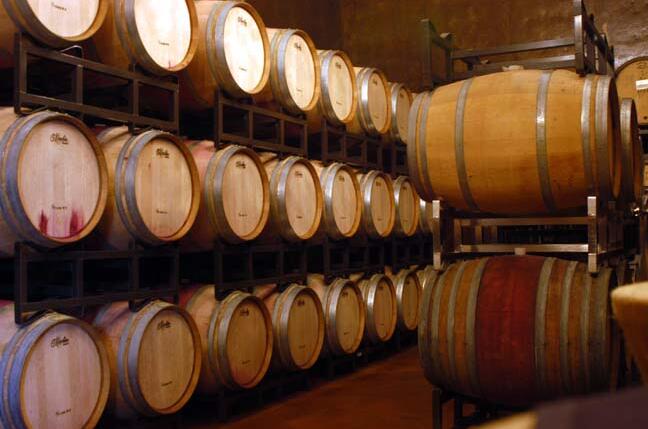Ozone for winery application:

Of chief concern in the wine industry are cross-contamination between batches of wine and management of Brettanomyces (natural yeast), which spoils wine by rendering an off-flavor. In the past, standard sanitation practices included the use of chlorinated cleaners for sanitation of winery equipment followed by a citric acid rinse to neutralize the chlorine. Barrel sanitation was an even tougher challenge; chlorinated cleaners couldn't be used in barrels because of the porous properties of oak and possible chemical retention.
The use of ozonated water for sanitation was presented in the late 1990s and was quickly adopted by the wine industry. Ozone presents several advantages over other alternatives, including higher sanitization quality, time and energy savings and decreased chemical use without the harmful disinfection byproducts of harsher chemical agents.
Typical applications for ozone in the wine industry include the following:
· Barrel washing
· Surface and equipment sanitization
· Tank cleaning
· Clean-in-place (CIP) of process and transfer piping
Barrel Washing
Typically, 2.5 ppm ozone concentration for 2 minutes on healthy barrels after a hot water flush is sufficient. If the barrel is severely contaminated, a 5 minute treatment may be required. Ozone enhances the barrels by preventing organic buildup that undercuts the longevity of these precious vessels. Ozone washing of wine barrels saves wineries considerable money on the high costs of replacing contaminated wine barrels. As a result, most of our ozone system installations yield a very high return on investment and short break even period.
Surface and Equipment Sanitization
A broad range of surfaces and equipment are routinely sanitized with ozonated water to control unwanted microbes and cross contamination. Harvest bins, crushing and de-stemming machines, conveyors, even floors are routinely and effectively sanitized using ozone. Bottles and bottling equipment are sanitized with ozone as well.
Tank Cleaning
While ozone is still the non-chlorinated cleaner of choice for initial sanitation, experience has proven that it should also be used for additional follow-on rinses as well. Stainless steel tanks may stand empty for a week or more after initial sanitization. Many wineries rinse all stainless steel vessels with ozonated water immediately prior to filling to ensure proper sanitization.
CIP of Piping
The highest risk of contamination in the in winemaking process comes from transferring the wine between the many necessary tank and barrel treatment steps. To mitigate this risk, wineries adopt stringent measures to their CIP processes.
CIP involves cleaning and sanitizing of pump systems, pipes, tanks, hoses, filters, bottling lines, etc. Using soaps, detergents, pressurized water and chemicals like chlorine or iodaphore solutions, these cleaning steps can require multiple rinses, often with hot water or steam, to remove residues. This labor and energy-intensive process is also a worker safety concern and can consume up to ten gallons of water for each gallon of wine produced.
Ozone, already an integral part of CIP sanitization in the food processing industry, is a natural choice for wines process machines. Using ozone generators CIP process saves time as well as costs.
Previous: Food processing
Next: Cooling tower
Becodrive Company Limited
Tel:+8613560466027
E-mail:ozone.qaos@hotmail.com
Web:www.becodrive.com
Add:1th Liulian Road, Jianggao, Baiyun, Guangzhou